![]()
Aroids and other genera in the Collection
Take the Tour Now?
Orchids
The
Exotic Rainforest
Plants in
the Exotic Rainforest Collection
Images on this website are copyright protected. Contact us before
any reuse.
This page is under construction
Within our collection we have many species of Philodendron. If you are seeking other photos, click this link
In depth information on how to grow
Philodendron
species, Click this Link
Unknown Philodendron species collected in Ecuador
This plant was incorrectly sold as
Philodendron rubrocinctum Engl.
According to aroid
botanist Dr. Thomas B. Croat this plant has no relationship to P.
rubrocinctum
The information on this page is
only my personal observations and notes and are not based
on published scientific material.

Unknown Philodendron species collected in Ecuador
Sold
incorrectly by some sellers as
Philodendron rubrocinctum
Engl.
which according to Dr. Croat is not scientifically
accurate
The plant came from Ecuagenera
in Ecuador and was purchased in the summer of 2007. On January 1, 2008 I
received this message from Gilberto at Ecuagenera,
"This
plant was collected 7 years ago in San Juan Bosco ,Morona Santiago
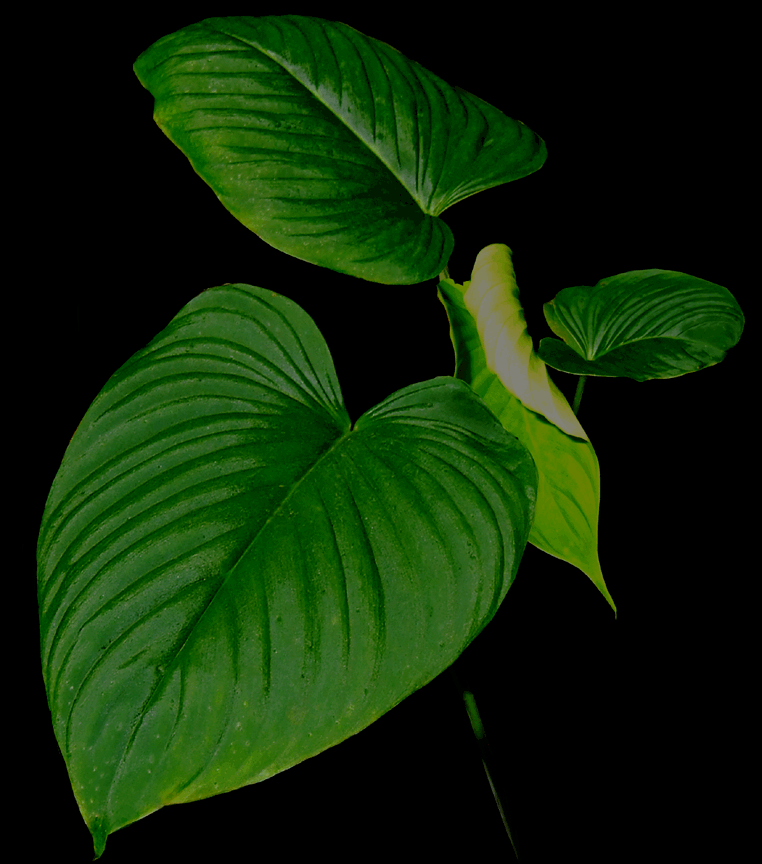 Province, in the Amazon side of Ecuador at an altitude of 1.500 m
above sea level."
To date, the exact collection
information
and location in nature has not been verified by a
botanical scientist and may be incorrect
Province, in the Amazon side of Ecuador at an altitude of 1.500 m
above sea level."
To date, the exact collection
information
and location in nature has not been verified by a
botanical scientist and may be incorrect
In several personal messages from aroid botanist Dr. Dr. Thomas B. Croat
Ph.D., P.A. Schulze Curator of Botany
of the Missouri Botanical
Garden in St. Louis, MO.,
he indicated it is not Philodendron
rubrocinctum and had these comments,
"I
donít know it and it is not P. grandipes. The internodes are too
long."
And again on January 9,
2009 Dr. Croat wrote,
"Your
plant has no relationship to Philodendron rubrocinctum Engl. Phil.
Rubrocinctum is related to P. nanegalense but I donít know it. It
is from Cauca Dept. at Belalcayar at 1000 m. It has scaly
petioles, Your plant apparently does not."
The Latin epithet "rubrocinctum"
would indicate the species is red banded. In all the highly magnified
photos found later on this page no red banding can be observed on
any part of the plant.
Although in some photos the specimen appears to be velutinous (velvety), the upper blade surface is only slightly velvet. The leaf blades are quilted with the primary lateral leaf veins sunken on the upper surface but raised on the abaxial or underside. The tertiary veins (minor veins) can be observed on the adaxial (upper) surface but are less obvious on the underside (see detailed photos below). The blades are thin.
The midrib and primary lateral leaf veins are sunken on the adaxial (upper) surface and are concave on the abaxial or underside of the blade.
The cataphyll is pale greenish/white. A cataphyll is a bract like modified leaf that surrounds any newly emerging leaf blade and whose purpose is to protect that new leaf blade during development. The cataphylls are greenish white. (see photo below). The cataphyll is the singular most important identifying characteristic of an aroid. Once the new blades emerge from the cataphyll they unfurl with involute vernation. Vernation indicates the coiled arrangement of young leaves as they emerge so Involute vernation is to unfurl from each side of the blade at the simultaneously (see photo, above right).
The petioles are canaliculate ("C" shaped or canal-like) with a concave adaxial (upper) surface (photo right). Despite common misconceptions, the petiole is not the "stem", a term commonly incorrectly used by collectors. The petiole is the stalk which connects the leaf blade to the stem which is at the base of the plant. (see detail photos below). The petioles appear faintly striate microscopic lines along the axis (photo left and below). The striations are so faint as to possibly be insignificant. I asked Dr. Croat for his opinion on the sulcate characteristics seen at the very base of the petiole and once again learned something new! Dr. Croat wrote, "The petioles appear to be faintly striate near the base but you have taken a picture of the sheath. All species are sulcate at that point so it is irrelevant." Sulcate is to possess a sulcus or canal or to have small parallel grooves while striate is to exhibit thin parallel lines.
The nodes on the stem are placed at a distance of approximately 2.5 cm (1 inch) and the roots are relatively fine in appearance (photos below) and brown to reddish brown in color with a hint of yellow.
We are also working to gather additional data on this specimen.

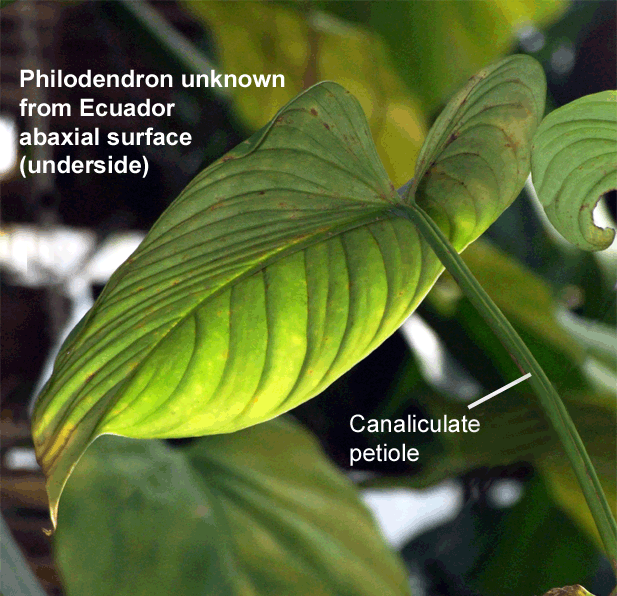
Want to learn more
about aroids? 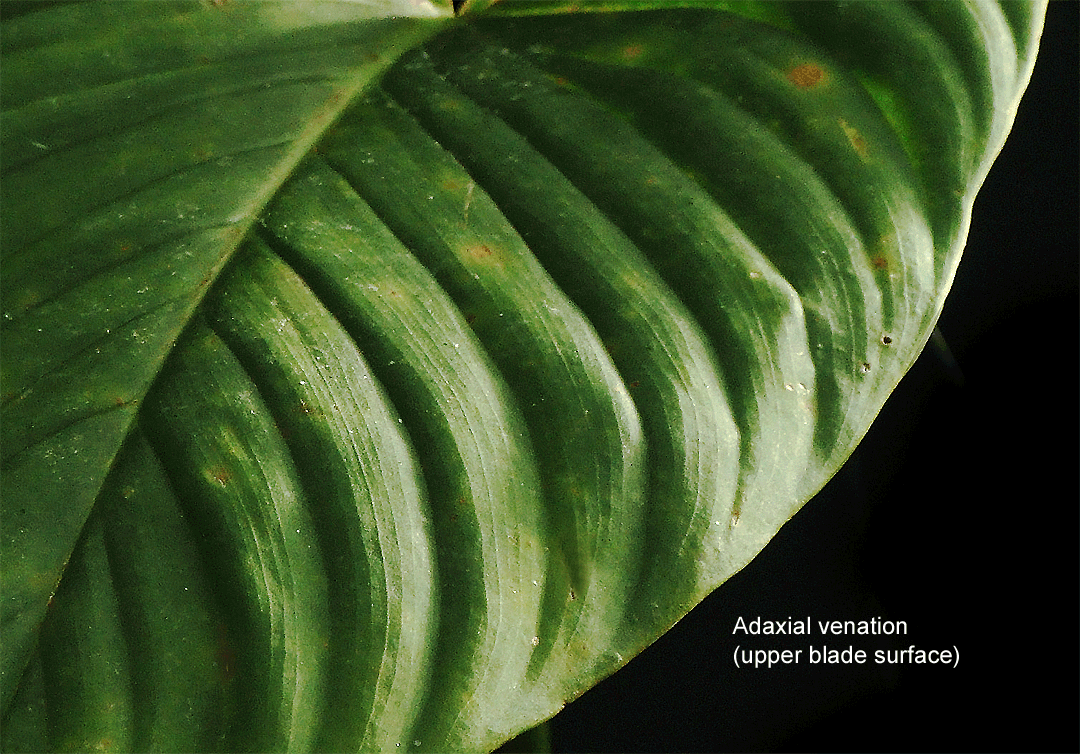
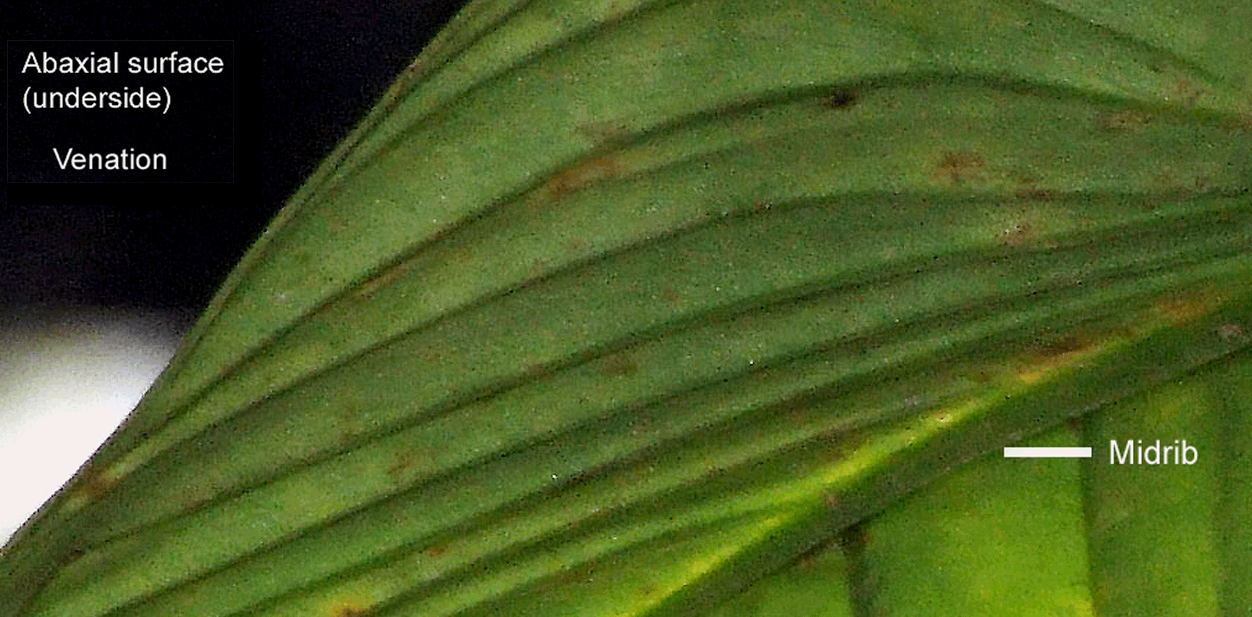



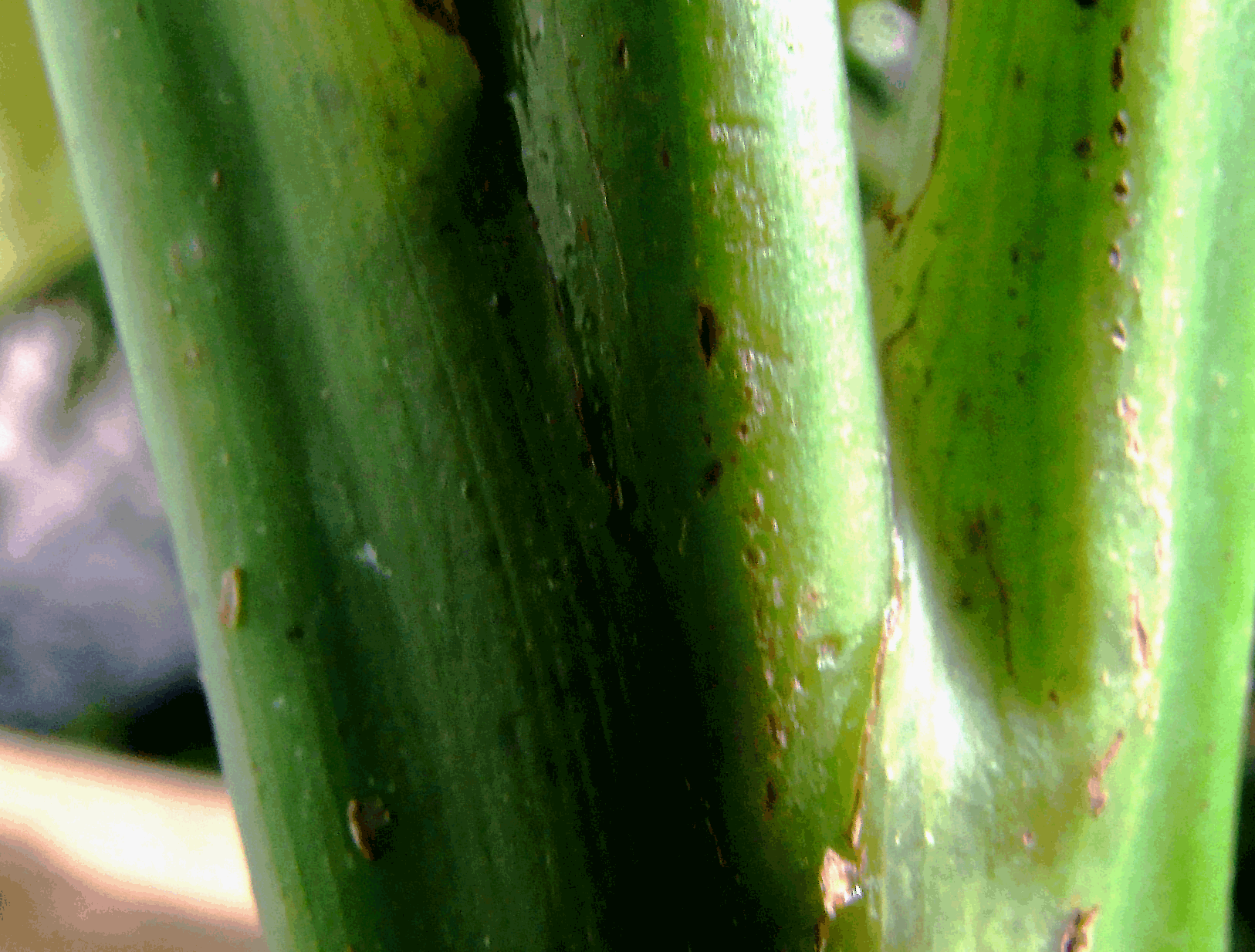
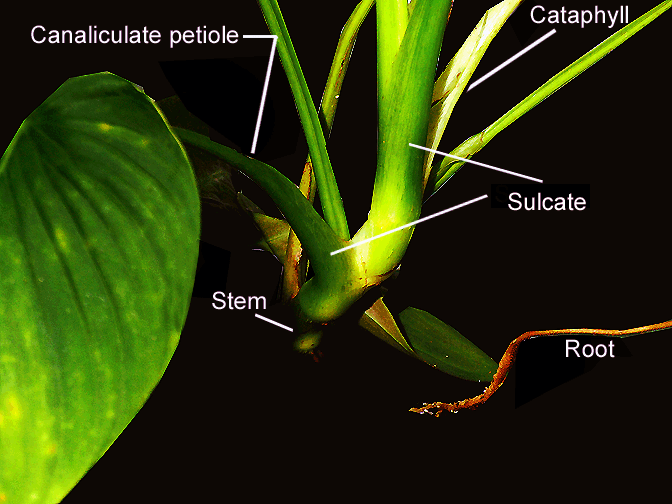
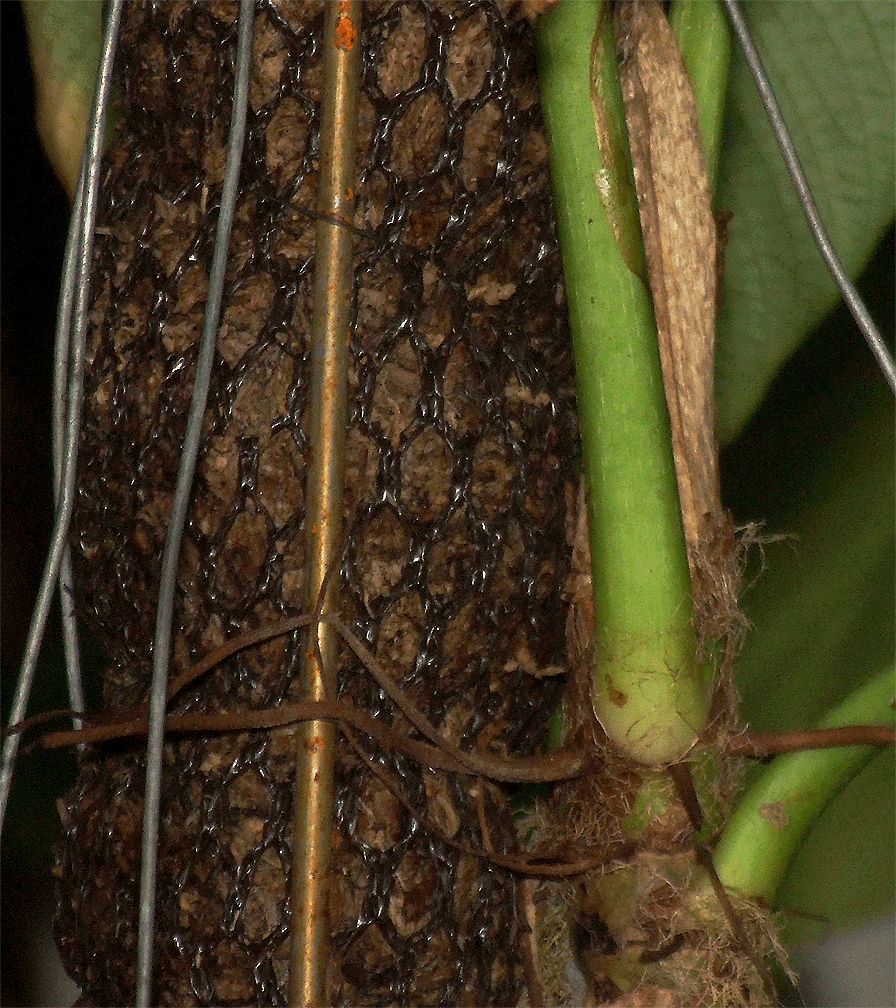
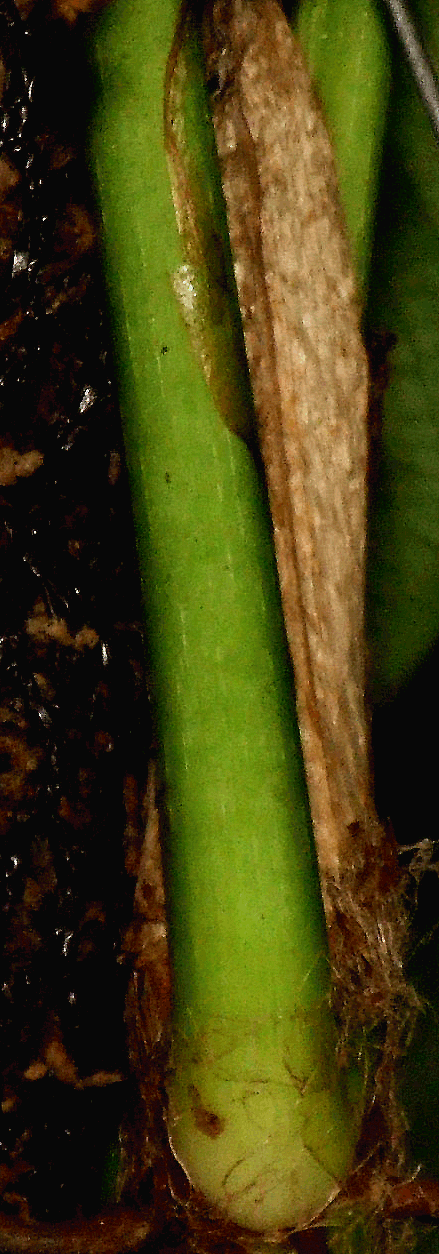

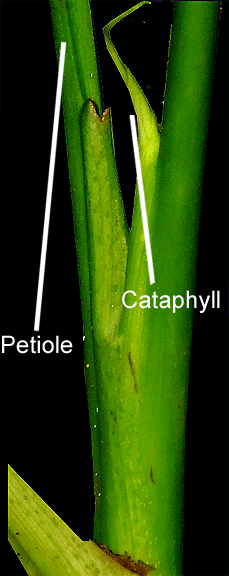
Join the
International Aroid Society:
http://www.exoticrainforest.com/Join%20IAS.html